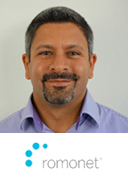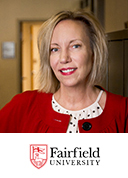INSIGHTS
Q&A: A Major University Learns the Benefits of the Cloud
Universities represent one of the most challenging technical environments. They store enormous amounts of data, including highly sensitive financial information. They tend to operate on limited funds. And all the while, thousands of millennial students armed with a half-dozen devices expect more and more bandwidth to take classes online, play games, watch videos and much more.
Transform to Better Perform discussed these issues and more with Paige Francis, Chief Information Officer, Fairfield University. Her biggest pain points include all of those above, but she turned to the cloud for storage and apps that have made life easier. Here’s what she had to say.
Now more than ever, it’s time for the technology team to rise to the occasion and start becoming an integral part of the strategy of any company or institution where they’re involved.
Transform: How is the data explosion affecting a major university?
Francis: I have found recently that the higher education environment is a lot more open to hosting our data elsewhere, and we had to accept this change primarily and initially due to financial restraints, resource restraints and cost concerns. As of right now, it's my understanding that the education environment falls only second to healthcare in the collection of data. We have everything. We have students’ academic records, which are obviously protected under FERPA and a variety of federal laws, but we also have medical histories, parent financial information, and a plethora of data where most businesses tend to focus on only one.
The one area at Fairfield University that we have not branched out and hosted our information in the cloud is our system of records. However, we're not adverse to it at all. It's primarily just that we have a repository here on campus. Student grades, the learning environment, the learning experience, the application process, student involvement and activities, that's all primarily at this time in the cloud. But I would say our primary concern with the explosion of data is how in the heck do we use it to make better decisions and to drive decisions tomorrow?
Transform: That's really I think the million-dollar question for everybody right now.
Francis: We've got the data. We've got it all. We've got it all compartmentalized. We've got it protected. It's secure. It's safe. It's kind of tucked away. We do use data to make decisions but we have a lot more data than decisions we're making. I'm not really sure that we're using it effectively.
Transform: I run into that comment quite a bit. In addition to storing data in the cloud, how else are you using the cloud?
Francis: Our university portal is in the cloud – that is the pass-through for students, faculty and staff to get all the information they need or to access the data that they input. They have to go through a cloud portal. Our learning management system is entirely hosted in the cloud. It’s where our faculty members keep tests and our students turn in their assignments. It's where they participate in class off hours, if there is a flipped classroom experience – most [courses] at Fairfield University are flipped classroom or a hybrid learning environment. This is all stored within the cloud.
We don’t create personally a lot of apps, but we have deployed several apps on our campus, like a Shuttle Locator app. Our students are not allowed to have cars in their first two years on campus so they are tethered to our university environment and rely on our shuttle system. So we did have to deploy an app in order for students to be able to know when exactly to walk out of the Stop and Shop with eight bags of groceries on their arms in 2 feet of snow exactly when the shuttle will be pulling up. Everything that our students do or can access is primarily tracked via a one-card system. We use Blackboard for our one-card system and it does everything from give students access to certain rooms on the campus, to allow them to pay for their Starbucks here on campus. That's entirely hosted and in the cloud.
Transform: What else?
Francis: Our calendaring system in which we reserve all of our spaces and places on campus – that's entirely hosted in the cloud. And we have a new environment called OrgSync which is where students kind of map out what their plan is for the year – everything from their first year experience to whether they're going to participate in a certain club or go to a certain ball game. We track all of this using the work OrgSync product and it's entirely in the cloud. Aside from our system of records,- we're about 90 percent in the cloud right now. Any data that we have on our campus is virtualized, so everything is virtual here on campus.
Transform: One of the things we're hearing more on the corporate side is that business owners within organizations are pushing for new technologies. What's the feeling on your campus?
Francis: For many of our business offices, I would almost go as far as to say we have exhausted them. They ask us on a regular basis to slow down because we are continually trying to keep up with the pace of technology. We've done a fairly good job of it but a lot of what needs to be worked on here at the university is cleaning up past data and changing processes and procedure to match that pace a little bit – that requires work on their end as opposed to on ours. I will say that everyday, we are slightly perturbed at the state of our ERP systems but I don't think that anyone is really thrilled with their current ERP system. Everybody wants something; the grass is always greener kind of situation.
Transform: What part of ERP is causing the most pain?
Francis: Reporting, budgeting and forecasting, which are not standard functions of an ERP system. We do go back and forth a little on how to accommodate these needs. But we are all about scaling down and providing peppier and cheaper solutions that respond a lot better and a lot quicker to the environment – more agile.
Fairfield University is all about integration here. Whatever solution someone chooses, as long as there is the opportunity for it to integrate back with our system of record, we're all in.
Transform: What’s your most-pressing IT need right now?
Francis: Our most pressing IT initiative is keeping up with the pace of connectivity and accessibility for our students and wireless bandwidth. With these kids, you could double your bandwidth tomorrow and it's not enough. So it's just dealing with that expectation, I think that's probably our biggest issue/struggle/ opportunity.
Transform: Are you using the cloud to address that?
Francis: Right now, we're just trying to upgrade our environment in general. But we are actually looking at something that's really exciting, called ResNet. It's this residential network environment. If you have a certain level of network infrastructure in your campus, they would literally come in and lay almost a blanket of their solution on top of all your residence halls. And you will pay a per-student, per-head count, per-dorm room fee. It guarantees an uptime and a speed that we could never match on our own, and it has 24/7 support. The fee for this is actually competitive. [Our students’] expectation is to have the same connectivity they had at home. When they're sharing a space with 50 other people that are in sort of the same footprint, it makes it tough.
We have six to eight mobile devices per student on our campus, which is above and beyond what the norm is, but it's six to eight wireless devices, and they expect to be able to access everything, from all of it. They've got multiple gaming systems, which are now wireless, which now also connect to the network, which will allow them to connect to their LMS. They've got the e-readers, they've got tablets, they've got their smartphones and laptops, they've got it all.
Transform: Beyond cost, what are some of the biggest obstacles or challenges that you're facing in adding new technology?
Francis: Aside from cost, our biggest struggle right now is funding. I don't mean actually getting the money but identifying it as capital expenditure versus operational expenditure. The current business model, which has been in place for however many years, actually stifles the pursuit of innovative solutions. The way it works in higher ed, you get a certain bucket of operational dollars and then you get a certain bucket of capital dollars every year. It used to be that your operational funds covered your typical expense. You got your compensation and non-compensation. And then you would go to bat – to get capital dollars every year – and this could be in the six figures, it could be in the seven figures – and you go in and you lay all of your priorities on the table alongside everybody else on campus to try to get these capital dollars for these one-time large project expenses.
It used to be that I would want to build a storage area network or something similar. Now we're wanting to actually put this in the cloud and that's not capital dollars anymore, that's operational. Trying to explain why we need to have a 20 percent increase in your operational funds to pursue innovation is a tough to sell to the board of trustees. It's tough to sell that to a finance team and leadership within the university. It's a constant struggle throughout the year to ensure that our capital projects stay capitalized and that it doesn't impact our operational dollars. It's funding, it's all about funding and business models.
Transform: On the corporate side, we see business owners trying to apply more new metrics to the IT group. Whereas traditionally, the standard might have been reliability and security and that sort of thing, now they're looking at things like, "Are they bringing us new ideas?” or “Are they enabling the business to work better?"
Francis: I'm a huge advocate of it. I think that when you look at IT as a partner on the campus, we impact every facet of daily life. If you have a leader in your IT department who’s not bringing ideas, who's not at the table for change – and improvement, innovation, sustainability, attracting whoever it is that you're trying to attract – if your IT leader is not an active part of that, then you're missing out because in many ways they should be driving the charge for innovation and efficiency. I think statistics show that 50 percent or more of the CIOs will be retiring within the next five years. It’s likely time for that shift. It’s time to have the more strategic- and business-minded individuals in the technology leadership positions. I think that it's important to have technology experience, but I think that in some ways, that is slowly but surely going to dip down on the priority list for technology leadership … Now more than ever, it’s time for the technology team to rise to the occasion and start becoming an integral part of the strategy of any company or institution where they’re involved. And I think that what’s interesting is that suddenly, the business side seems to want to up their pace to match that of technology.
More Point of Views

Srini Koushik
Chief Technology OfficerMagellan Health
Point of view story
The Traditional Model of IT is Dead - Meet Exponential IT
Zahl Limbuwala
CEO and Co-FounderRomonet



